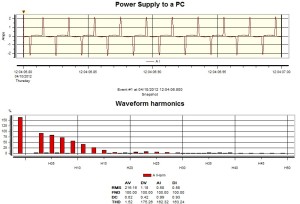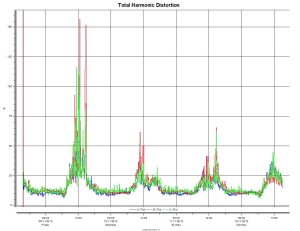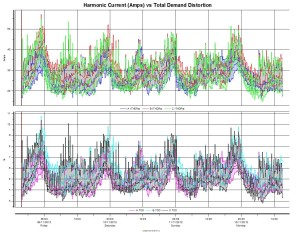Mr. Harmonics is frequently being blamed when an equipment failed (or when a cable burnt, capacitor bank blown, or a circuit breaker tripped without an obvious fault). Some without due consideration of other simpler factors will blame Mr. Harmonics and his cousins like Mr. Resonance (or perhaps his friend, Mr. Transient – story for another day) straightaway.
Surprisingly, it is a fairly easily accepted reason here. And with power quality instruments getting more affordable these days, it has been becoming quite common to see someone using this new toy, measure current harmonics in percentages of 50-80%, and straightaway concluded that it is indeed a harmonics problem.
Firstly, when it comes to harmonics, we need to know; is it voltage or current harmonics? While there is a common indicator to measure both of them – using the Total Harmonic Distortion (THD) formula (RMS value of the harmonic content expressed as a percentage of the fundamental), one needs to know the pros and cons of using such indicator when applying to voltage/current harmonics.
Usefulness of THD
- provide a good indication of how much additional heat will be realised when a distorted voltage is applied across a resistive load
- give indication of the extra losses caused by the current flowing thru a conductor
Limitations of THD
- unreliable indicator of voltage stress within a capacitor (look out for the peak value instead not THD)
- a meaningful indicator for voltage harmonics, as voltage varies only a few % (as referenced to its fundamental)
- not so the case for current harmonics as a small current may have high THD but not a significant threat to the system; can be extremely misleading.

Here in Fig1, is the current waveform and spectrum of the common switched-mode-power supply to our PC/laptop at work or home. Looking at just its THD% current, one will be extremely alarmed (162%!!). So should all of us purchase harmonic filters for all our homes/offices then? (fact: the actual amperes of this circuit is less than 0.6Amps, and VTHD is only 1.52%)
When it comes to current harmonics, it will be more meaningful to use other alternative indicators such as Total Demand Distortion (TDD), or use absolute amperes (my personal recommendation).
Fig 2 and 3 shows the trending results of current harmonics, presented in THD%, Harmonic Amps and TDD%.
Total Demand Distortion
- Current THD is misleading during light load conditions (when I1 is small)
- Similar to THD, except that the distortion is expressed as a percentage of some rated load current magnitude rather than as a percentage of the fundamental.

